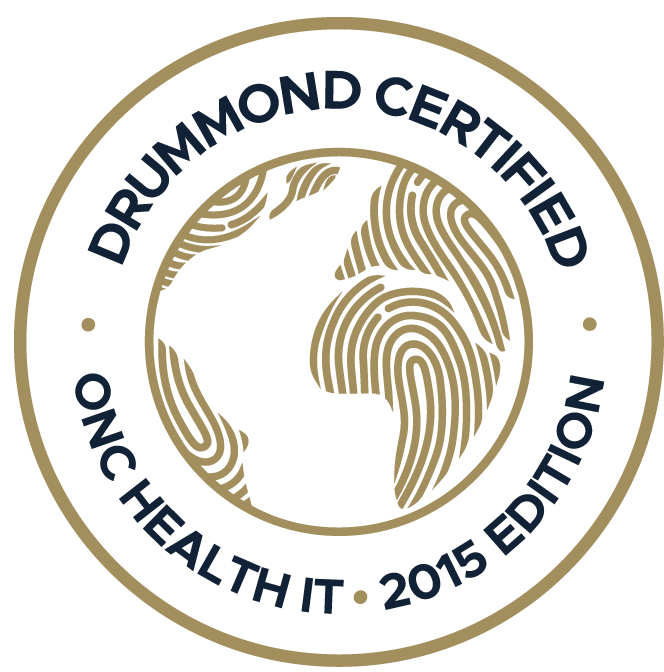Is your practice struggling to overcome operational bottlenecks despite trying everything from hiring extra staff to outsourcing certain tasks? A reliable healthcare practice management software might be the answer...
Did you know that in 2024, North America became the largest stakeholder in the Revenue Cycle Management (RCM) market, with a massive share of 50.18%? As per the reports, the global Revenue Cycle Management market is projected to grow from $163.72 billion in 2025 to $361.86 billion in 2032. The stats hint at countless benefits of revenue cycle management in healthcare, especially when it comes to optimizing medical billing for private practices.
But how often have you asked yourself, your staff, or your medical billing specialist, “Where is the money?” Revenue Cycle Management (RCM) answers that question and makes sure you know where your money is going and where it is coming from.
Now, you might be asking, what is Revenue Cycle Management (RCM)? RCM refers to the process of managing your revenue stream from revenue generation activities, such as completed patient visits, to medical billing, insurance claims, reimbursement, and, finally, money in the bank.
Optimizing the RCM could be the key to the financial success of your practice. We have covered everything about RCM and the benefits of Revenue Cycle Management here!
Areas Covered by Revenue Cycle Management (RCM)
The crucial word in Revenue Cycle Management (RCM) is “management.” Management means that a designated person from your administrative staff, your Electronic Health Record (EHR) RCM account manager, or your biller understands and manages the following:
1. Task assignments that result in missed revenue opportunities, such as:- Outstanding documentation
- Slow staff response to billing
- Clearinghouse delays
- Collection delays
2. Total outstanding revenues, which include :
- This includes calculating contractual differences between dollars billed through medical billing activities and your actual anticipated revenues.
- Accounts receivable by 30/60/90 and 120 days to identify any revenue bottlenecks.
3. Plan aging by insurance company, including:
- Denials being worked
- Denials are not being worked with explanations
- Write-offs with explanations
- Single code payment problems or denials
4. Payer source comparison analysis, which includes
- Visit volume
- Percentage of total visits
- Total amount billed for those visits
- The average dollar amount per visit
- The amount received vs. the amount billed
- The outstanding amount vs. the amount paid and
- The average days to payment
5. Patient balance aging, including
- Patient credit balances
- Unapplied revenue.
6. Revenue loss associated with patient cancellations and no-show information compared with reschedule percentage rates.
What Are the Benefits of Revenue Cycle Management For Medical Practices?
The benefits of Revenue Cycle Management (RCM) have gone beyond EHR systems. Back-office Revenue Cycle Management carries equal business weight to your revenue generation from patient care because it realizes profits for your efforts. Here's a rundown of the benefits of Revenue Cycle Management for practices:
1. Revenue ManagementFor medical practices, RCM focuses on revenue maximization by identifying revenue leaks, such as claim denials and reimbursement issues.
There is nothing more frustrating to administrative support staff than to work as hard as possible and fall further and further behind. The RCM tasks mentioned here are not insignificant, and each element deserves proper attention if you want to increase the benefits of Revenue Cycle Management.
Ask yourself honestly if you have the skilled and experienced staff members you need to keep up with revenue management. Does your EHR work with your staff to help them accomplish their tasks?
An all-in-one EHR and PM solution like PracticeEHR can help minimize the number of skilled staff members required to manage the revenue cycle effectively.
2. Communication Transparency
This means that you and your medical billing staff have open communication that allows for reasonable discussions associated with RCM.
Weekly and monthly meetings to discuss revenue optimization can maximize the benefits of Revenue Cycle Management (RCM). A monthly financial business report in such meetings can also bring a significant improvement in your revenue generation through your EHR.
The reports should be organized to improve meeting efficiency and help explain and troubleshoot problems. You and your biller must be informed enough that when issues arise, a simple conversation can yield an action plan.
3. Revenue-Related Records VisibilityYou and your staff, who have permission to access business revenue and medical billing records, should be able to do so at the touch of a button within your EHR. This means that your EHR vendor should offer transparent, instant access to financial and patient health records.
This would help you stay updated about your practice’s revenue. You can easily track the records, analyze the financial health of your practice, and make necessary adjustments to optimize Revenue Cycle Management (RCM).
Essential Steps For Effective Revenue Cycle Management (RCM)
RCM involves several steps, beginning with patient registration, insurance verification, medical billings, and denial management. All steps are designed to streamline workflow and maximize the benefits of Revenue Cycle Management for your practice.
Here are the important steps for effective revenue cycle management:
- Appointment scheduling
In the initial stage, you need to determine the required services for the patients at your practice. Then, the data, including their names, contact information, and other details, will be collected from the patients.
- Patient Registration
After collecting the required information for a patient, you would need to complete insurance verification, after which the patient is registered at your practice.
- Medical Billing
You must ensure that you generate clean claims against the services provided to the patients registered at your practice to receive reimbursement from insurers and provide bills for patients. The best approach is to get a reliable medical billing partner, like PracticeEHR, onboard and automate the claims reimbursement process.
- Claims Denial Management
Once the medical billing system gets up and running, you will need to review denial reason codes to determine why a claim was denied and take measures to prevent denials in the future. This is a major part of the RCM, and a reliable medical billing partner can help minimize denials.
- Follow-up on Accounts Receivable (A/R)
Unpaid charges can clog the cash flow. And that’s why you would need a team that follows up on the Accounts Receivable (A/R) and makes sure that your practice gets paid on time for the services provided.
How is AI Optimizing Revenue Cycle Management in 2025?
HFMA Plus surveys have indicated in their recent reports that around 46% of the hospitals across the US have started using EHR systems offering AI solutions to gain the benefits of Revenue Cycle Management. Here’s how AI-powered tools are optimizing Revenue Cycle Management for private practices:
- Patient Payment Optimization
AI-powered chatbots in EHR systems can remind you about your payments and other medical billings. AI can also personalize your payment plans based on your financial situation.
- Automated Billing (Claim Scrubbing)
The AI Claim Editor in PracticeEHR evaluates claims that are ready for submission for any discrepancies and errors. Once it identifies any claim errors, it will alert the user to make necessary changes before the claim submission.
- Workflow Efficiency
AI can ease the burden on healthcare professionals and add to the many benefits of Revenue Cycle Management by automating financial tasks and optimizing scheduling and resource allocation.
Get the Benefits of Revenue Cycle Management With PracticeEHR!
Every medical practice should leverage Revenue Cycle Management (RCM) to the maximum because a healthy cash flow means financial viability. Do you want to maximize the benefits of Revenue Cycle Management for your practice? Consider PracticeEHR, which helps hundreds of private practices around the United States by providing comprehensive RCM services, from flawless claims submission to denial management.
You need an RCM structure that works efficiently to produce task accountability, build communication transparency, and provide financial record visibility. Efficient RCM processes help you control your business and realize a maximum profit.
Are you curious to learn more about how PracticeEHR can help you address the cash flow issues at your practice and maximize the benefits of Revenue Cycle Management? Contact us today for a free demo on how we can help you streamline your medical billing practices and yield higher revenues!
FAQs
1. What is the RCM process?RCM refers to the process of managing your revenue stream from revenue generation activities, such as completed patient visits, to medical billing, insurance claims, and reimbursement, all to maximize the benefits of Revenue Cycle Management (RCM).
2. What are the steps for the RCM process?The steps for an effective RCM include appointment scheduling, registration, charge capture for services, denial management, and AR follow-ups.
What is the use of AI in RCM?AI in Revenue Cycle Management (RCM) automates medical billing, reduces errors, and speeds up payments. It also predicts billing issues early and prevents revenue loss. This helps practices improve efficiency and increase profits.
Topics: Product Updates, Revenue Cycle Management, Medical Billing, RCM, Technology in Healthcare, AI Solutions
RECENT POSTS



TOPICS
- EHR Solution (191)
- EHR (124)
- digital age (117)
- Patient Care (116)
- Medical Billing (110)
- Specialty-Specific EHR (110)
- Industry Update (97)
- Technology in Healthcare (84)
- EHR Features (79)
- Small Practice (77)
- Medical billing services (72)
- HIPAA Security (62)
- Integrated EHR (62)
- RCM (62)
- New Technology (44)
- Cloud-based EHR (43)
- Telemedicine (42)
- Healthcare Office Management (40)
- Practice EHR News (38)
- Kiosk (31)
- Revenue Cycle Management (28)
- AI Solutions (23)
- ePrescribing (21)
- AI Scribing (16)
- Best EHR Software (16)
- EMR (12)
- Practice Management Software (12)
- AI-powered Medical Billing (10)
- Client Favorites (10)
- Practice Automation (10)
- TeleVisit (10)
- The ONE (10)
- AI EHR (9)
- Switching to New EHR (9)
- MACRA/MIPS (8)
- Patient Portal (8)
- Urgent Care (8)
- AI Scribe (7)
- Best EHR Practice (7)
- EHR Integration (7)
- Psychiatry EHR (7)
- E-Prescribing (6)
- Product Updates (6)
- events (6)
- AI scanning (5)
- MIPS (5)
- Automated Health Tools (4)
- HIPAA (4)
- Insider (4)
- Internal Medicine EHR (4)
- MIPS Reporting (4)
- Mobile EHR (4)
- Orthopedics EHR (4)
- Podiatry (4)
- Podiatry EHR (4)
- Telehealth Platform (4)
- Chiropractic EHR (3)
- Digital Experiences (3)
- EHR Flaws (3)
- EHR Implementation (3)
- EHR for Chiropractors (3)
- EHR for Small Practices (3)
- Family Medicine EHR (3)
- Integrated Practice Management (3)
- Medical Practice Management Software (3)
- Patient Check-in Kiosk (3)
- PracticeEHR GO App (3)
- Regulatory Updates (3)
- Telehealth Platforms (3)
- Clearinghouse (2)
- Dermatology EHR (2)
- EHR Scheduling (2)
- Eligibility Verification in Medical Billing (2)
- Foot and Ankle Care (2)
- Foot and Ankle EHR (2)
- Health records 101 (2)
- Medical Coding Services (2)
- Medical Credentialing (2)
- Multilingual AI Scribe (2)
- Quality of Patient Care (2)
- Reporting Under MIPS (2)
- Risk and Liability in Medical Settings (2)
- What Works Clearinghouse (2)
- AI Scan (1)
- Bariatric EHR (1)
- Behavioral Health Practices (1)
- Billing Communication (1)
- Billing for Private Practices (1)
- Cardiology EHR (1)
- Cash Flow (1)
- Cashless Payments (1)
- Charting (1)
- Data Security (1)
- Dos and Don'ts (1)
- EHR Guides (1)
- EHR KPIs (1)
- EHR Questions to Ask (1)
- EHR Transition (1)
- EHR for Chronic Illness (1)
- EMR vs EHR Difference (1)
- ENT EHR (1)
- Endocrinology EHR (1)
- Family Medicine (1)
- Gastroenterology (1)
- Gastroenterology EHR (1)
- General Surgery EHR (1)
- Geriatric AI scribe (1)
- Geriatrics EHR (1)
- Guides (1)
- Healthcare Compliance Certification (1)
- Healthcare Practice Office Management (1)
- Help Center Videos (1)
- Insurance Reimbursement (1)
- KPI (1)
- Key Performance Indicators (1)
- Lab Processing (1)
- MACRA (1)
- Medical Billing Partner (1)
- Nephrology EHR (1)
- Neurology EHR (1)
- Pain Management EHR (1)
- Pediatrics EHR (1)
- Physical Therapy EHR (1)
- Practice Cash Flow (1)
- Practice Efficiency (1)
- Pulmonology EHR (1)
- Reconsider Your EHR (1)
- Simplify Practice Management (1)
- Staffing in Healthcare (1)
- Switch Medical Billing Providers (1)
- Urgent Care Medical Billing (1)
- Urology EHR (1)
- Voice-Activated AI Scribe (1)
- insurance claim denials (1)









